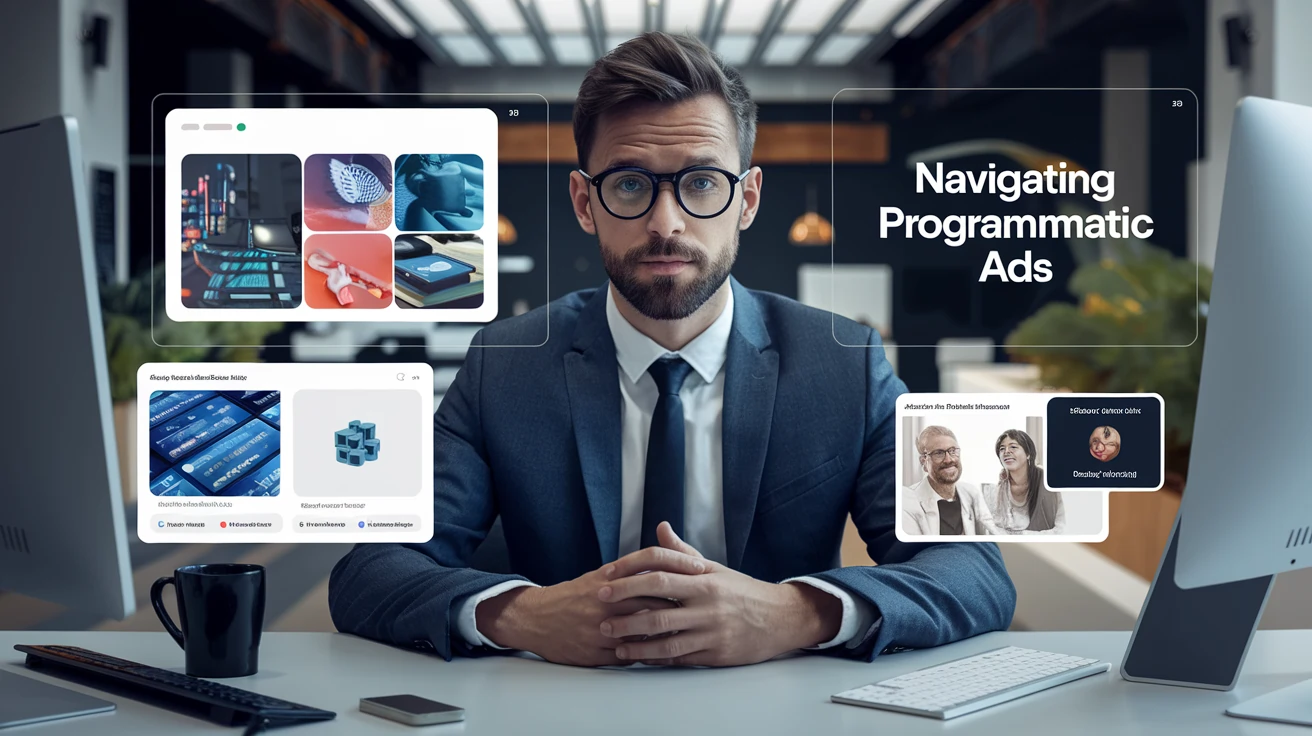An Introduction to Programmatic Advertising: How It’s Changing Digital Marketing

What Is Programmatic Advertising?
Programmatic advertising is a cutting-edge, automated approach to buying digital ad space across multiple online platforms, including websites, social media, and mobile apps. Instead of manually negotiating with publishers, advertisers define their target audience, budget, and campaign objectives, allowing advanced technology to handle the rest.
Stepping into programmatic advertising felt like watching data science and marketing merge into one powerful force. These platforms process massive amounts of real-time data, enabling precise ad placements based on user behavior and engagement. The result? A cost-effective, highly targeted marketing strategy that adapts seamlessly.
Key Benefits of Programmatic Advertising
One of programmatic advertising’s most significant advantages is its targeting and budget allocation efficiency. By focusing only on specific audiences and interests, businesses can maximize their return on investment while minimizing ad waste.
For instance, instead of displaying a broad ad on a high-traffic website, programmatic allows brands to reach potential customers across multiple relevant sites with personalized messages. I’ve seen firsthand how retargeting plays a crucial role—ads can follow users across platforms, reinforcing brand awareness and increasing conversions.
Additionally, programmatic advertising continuously optimizes itself. Since campaigns adjust based on engagement and real-time performance, they become more intelligent over time without requiring constant manual tweaks.
How Real-Time Bidding (RTB) Works
At the core of programmatic advertising lies Real-Time Bidding (RTB)—an auction-based system where ad impressions are sold in milliseconds. Multiple advertisers bid instantly when a user visits a webpage; the highest bidder wins the ad placement.
At first, this seemed like a complex and overwhelming process, but once I understood the role of automation, the true power of RTB became clear. It ensures that ads appear at the right time to the right users, increasing relevance and engagement while optimizing costs.
Advanced Audience Targeting in Programmatic Advertising
Unlike traditional advertising, programmatic advertising offers more than just demographic targeting. It enables brands to engage with audiences based on their behavior, interests, and interactions.
One of the most impactful tools I’ve utilized is retargeting, which reconnects with users who have previously engaged with our brand, nudging them toward conversion. Another game-changer is behavioral targeting, which allows brands to reach users based on browsing patterns, recent purchases, and content consumption habits. Instead of broad segmentation, advertisers can tailor their messaging to individuals genuinely interested in their offerings, leading to more meaningful connections.
Diverse Ad Formats in Programmatic Advertising
Another significant advantage of programmatic advertising is its flexibility through a wide range of ad formats. From static display ads to interactive rich media, native ads, audio advertising, and video advertising, brands can experiment with different creative approaches.
I find audio ads to be the most compelling. They allow for immersive storytelling, boost engagement, and enhance brand recall. On the other hand, native ads blend seamlessly into content, providing a more organic and less intrusive user experience.
What to Expect from Programmatic Advertising in 2025
The landscape of programmatic ads is evolving rapidly, and 2025 is set to bring even more exciting developments. Artificial Intelligence (AI) and Machine Learning (ML) will play a more significant role in predicting trends and optimizing audience engagement.
With growing privacy concerns, the industry is shifting towards privacy-focused solutions, reducing reliance on third-party cookies and adopting contextual targeting methods. Additionally, programmatic audio ads are expected to rise alongside video, while in-game programmatic advertising will gain traction, creating new opportunities for brands to connect with audiences in interactive environments.
Advice for Those New to Programmatic Advertising
For beginners stepping into programmatic ads, understand your audience, key markets, and objectives. Precision targeting is the foundation of success but requires a deep knowledge of user behavior.
Begin with simpler formats like display and audio ads before exploring more interactive options like video and rich media ads. Partnering with a reliable demand-side platform (DSP) ensures transparency and helps navigate the programmatic ecosystem efficiently.
Lastly, continuous monitoring is crucial. While automation makes programmatic advertising powerful, regular performance reviews and adjustments will ensure optimal campaign success.
Final Thoughts
Programmatic advertising has revolutionized digital marketing by offering precision, efficiency, and adaptability. As a marketer, I appreciate how it allows brands to connect with audiences in a meaningful and data-driven way.
While the technology will continue to evolve, its core principles remain invaluable. In an era dominated by data and automation, programmatic advertising is one of the most powerful tools for reaching audiences where and when it matters most. The future looks promising, and I’m excited to see how it will continue shaping the advertising industry.
Also Read – Audio Ads
